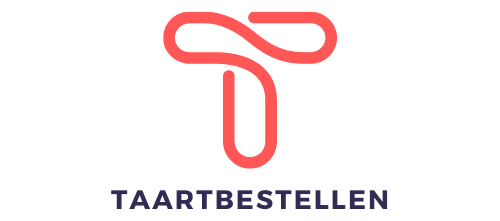How to Implement IoT Solutions for Intelligent Building Management?

As the world becomes increasingly digitized, traditional real estate is transforming into smart buildings. These sophisticated infrastructures leverage Internet of Things (IoT) technologies that connect multiple devices and systems to facilitate advanced automation, performance monitoring, and energy management. This article will delve into how IoT can turn your buildings into intelligent entities and guide you on how to implement these solutions.
Understanding IoT and Smart Building
At the heart of a smart building is the IoT – a network of connected devices and sensors that collect and analyze real-time data. The IoT allows systems to react intelligently to various stimuli, such as temperature changes or occupancy patterns, leading to increased efficiency and security. In other words, smart buildings use IoT to optimize energy consumption, enhance security, and improve the user experience.
A lire aussi : How to Integrate Advanced Water Purification Systems in Urban Developments?
IoT technologies are not a novelty in building management. For years, companies have been using these solutions to monitor power consumption, control HVAC systems, and enhance building security. What differentiates a smart building from a traditional one is its ability to integrate these systems and utilize the data collected to optimize overall performance.
Implementing IoT: the Key Steps to Smart Building Transformation
Implementing IoT solutions in buildings is a process that requires strategic planning and execution. There are several key steps that you need to follow to ensure successful IoT integration.
Lire également : How to Create Effective Wind Energy Solutions in High-Rise Buildings?
Identify Your Objectives: Before you begin implementing IoT solutions, it’s crucial to understand what you want to achieve. Whether it’s cutting energy consumption, improving security, or enhancing user comfort, your objectives will guide your IoT implementation strategy.
Choose the Right Technology: The next step is selecting the right IoT technologies to meet your objectives. This includes choosing devices and sensors to collect data, IoT platforms for managing these devices, and analytics tools to make sense of the collected data.
Install IoT Devices: Once you’ve chosen the technologies, it’s time to install the IoT devices. This involves placing sensors and devices in strategic locations throughout the building and connecting them to the IoT platform.
Collect and Analyze Data: After installation, collect data and use your chosen analytics tools to make sense of it. This analysis can help you identify patterns and trends, enabling you to make data-driven decisions about building management.
Leveraging IoT for Energy Management
One of the primary benefits of implementing IoT in building management is enhanced energy efficiency. IoT devices can monitor energy consumption in real-time, providing insights into usage patterns and inefficiencies. With these data, you can adjust energy consumption in line with occupancy and usage patterns, minimizing waste and reducing energy costs.
For instance, IoT-enabled lighting control systems can adjust light levels based on the time of day and occupancy sensors. Similarly, smart thermostats can adjust heating and cooling based on occupancy and weather data.
Enhancing Building Security with IoT
In addition to energy management, IoT can also significantly enhance building security. IoT devices can monitor entry and exit points in real-time, detect unusual activity, and send alerts in case of security breaches.
For example, smart locks and access control systems allow you to control who can access certain areas of the building at different times. Similarly, video surveillance systems can monitor the building round the clock, and the footage can be analyzed using AI technologies to detect suspicious activity.
Streamlining Building Operations with IoT
Apart from energy and security, IoT can also streamline building operations, leading to cost savings and improved user experience. IoT devices can monitor the condition of various systems in the building, alerting the maintenance team in case of potential issues.
For instance, sensors can monitor the condition of HVAC systems in real-time, allowing you to address potential issues before they escalate into costly repairs. Similarly, IoT devices can monitor air quality and adjust ventilation systems in real-time, providing a healthier and more comfortable environment for the occupants.
Implementing IoT solutions in building management can seem like a daunting task. However, with a clear strategy and the right technologies, you can transform your buildings into intelligent entities capable of optimizing energy consumption, enhancing security, and improving user experience. The road to smart buildings is paved with IoT – and the journey is well worth it.
Overcoming Challenges in IoT Implementation for Smart Buildings
Despite the numerous benefits, the transformation towards a smart building can be marked with some challenges. These can range from technological, financial, to security concerns. Understanding these obstacles can better equip you to devise strategies to overcome them.
Technological Challenges: The integration of multiple devices and systems can lead to interoperability challenges. Not all IoT devices and systems are standardized which might cause compatibility issues. Therefore, it is important to select an IoT platform that can integrate with a wide range of devices and systems.
Financial Challenges: Implementing IoT solutions can involve significant upfront costs. These include the cost of IoT devices, installation, and platform subscriptions. However, the long-term savings in energy consumption and operational efficiency often outweigh these initial expenses.
Security Challenges: As with any internet-connected system, IoT poses cybersecurity risks. Unauthorized access and data breaches can lead to significant damages. It’s essential to implement robust security measures, including data encryption and secure access controls, to mitigate these risks.
Future of IoT in Building Management
The integration of IoT in building management is set to revolutionize the way buildings operate. As IoT technologies continue to evolve, the scope of smart buildings will expand beyond energy efficiency and security to include aspects of occupant wellbeing and productivity.
Future smart buildings will leverage IoT for predictive maintenance, reducing downtime and maintenance costs. IoT sensors will monitor building systems in real-time, predicting potential faults before they occur. This will not only minimize disruption to occupants but also extend the life of building systems.
Furthermore, IoT will enhance the occupant experience, creating intelligent environments that adapt to individual needs. For instance, by analyzing occupancy and user behavior data, IoT can adjust lighting, temperature, and air quality to optimal levels, promoting wellbeing and productivity.
The integration of IoT in building management is more than a trend; it’s the future of real estate. As technology evolves and more buildings harness the power of IoT, the future looks bright for intelligent buildings.
Conclusion
The transition to a smart building with IoT is a strategic move that offers a myriad of benefits ranging from energy efficiency, enhanced security, to improved user experience. Despite the challenges, with careful planning and strategy, these obstacles can be effectively mitigated. With the future of building management leaning heavily towards IoT, it is an investment that will undoubtedly pay off in the long run. The journey of implementing IoT solutions in your building may be complex, but the outcome is a truly intelligent building that is efficient, secure, and user-friendly.
